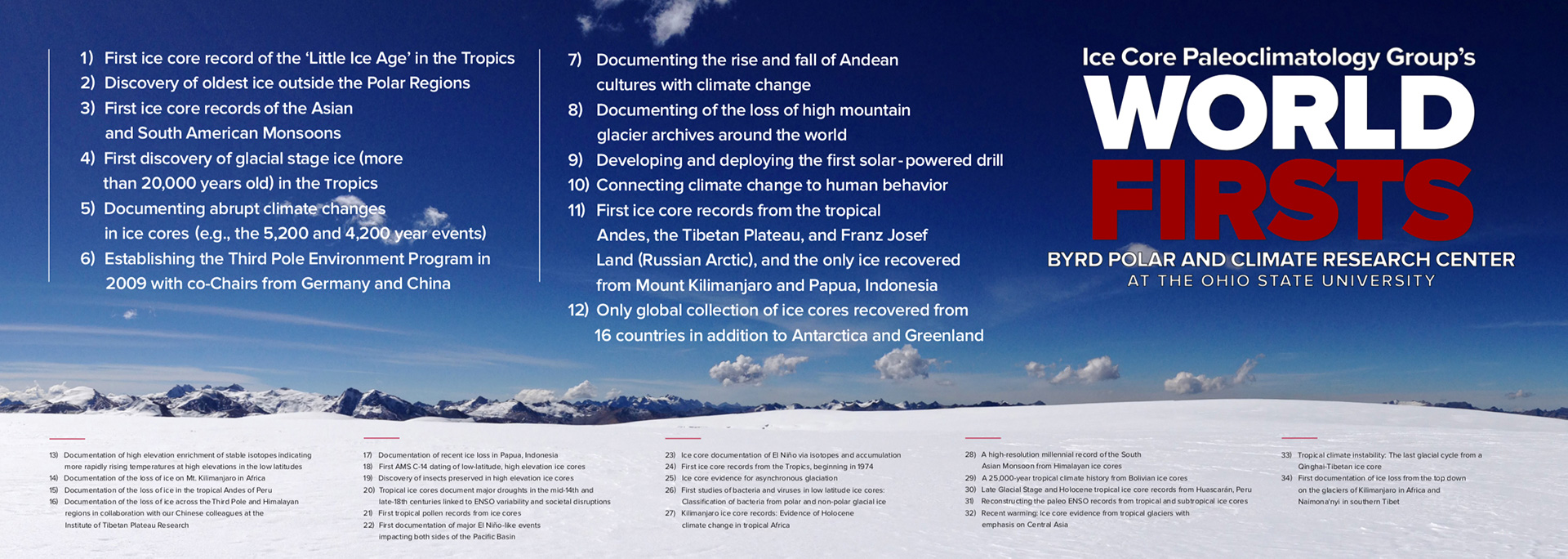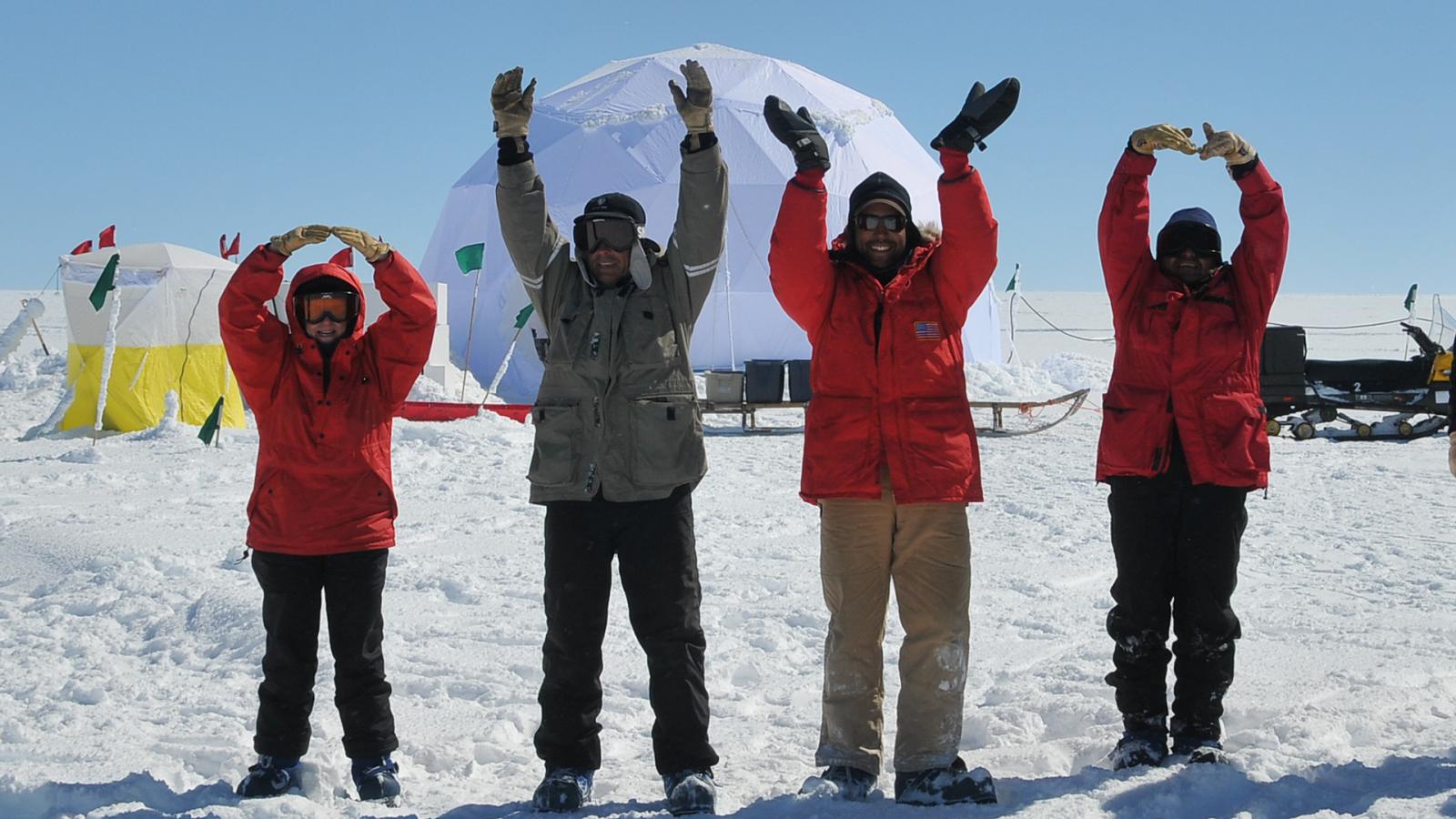70% of Earth’s population lives in and around the Tropics. Thus, it is important to understand both the past natural tropical climatic variability and the drivers of the current accelerating loss of glaciers on tropical mountain ranges. The ongoing loss of these glaciers has serious implications for water resources and the nearly 2 billion people who live in these regions.
Ohio State's Ice Core Facility is the only place in the world where ice from many of these vanishing glaciers still exists. Future generations of scientists will deploy new methods and technologies to answer questions about our future informed by this glacial archive. But this will happen only if we have facilities with conditions to properly preserve the existing collection and additional space to house unique ice cores acquired from remote mountains before they disappear from nature permanently.
The Ice Core Paleoclimatology Research Group at Ohio State drilled the world's first deep tropical ice cores in 1983 on the summit of the Quelccaya ice cap in the southern Andes of Peru. Since then, many more ice cores have been obtained from glaciers such as Kilimanjaro (Tanzania); Sajama (Bolivia); Huascarán, Coropuna and Hualcán (Peru); and five sites in the Third Pole (Tibetan Plateau) region. The research group has recently launched new research programs to study the evolution of bacteria and viruses which have been preserved in ice for millennia, allowing scientists to address how their evolution has proceeded over the last million years.


